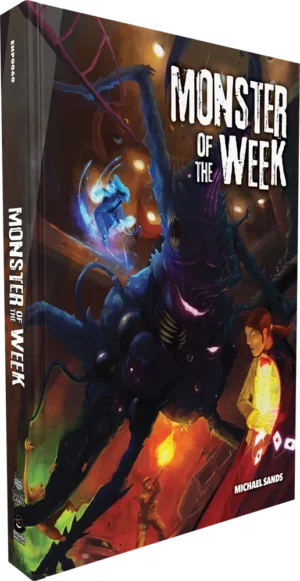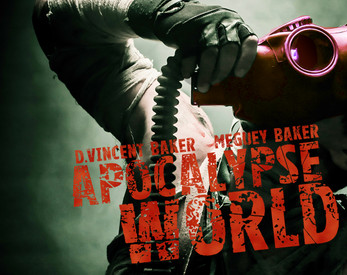Bluebeard's Bride Dark Fantasy; Gothic; Psychological; Powered by the Apocalypse (PbtA); Narrative-Driven; Collaborative Worldbuilding
Bluebeard's Bride is a tabletop roleplaying game that delves into the dark fairy tale of Bluebeard, exploring themes of feminine horror, psychological trauma, and gothic dread. It utilizes the Powered by the Apocalypse (PbtA) system to create a narrative-driven, collaborative storytelling experience where players collectively embody different aspects of the Bride's psyche. This report examines the game's core mechanics, unique elements, target audience, and the overall player experience, drawing insights from various online discussions and resources.
Theme and Setting
Bluebeard's Bride immerses players in a gothic horror setting, directly inspired by the classic Bluebeard fairy tale. The game explores themes of feminine horror, focusing on the Bride's psychological and emotional journey as she uncovers the dark secrets of her new husband's mansion. The setting is not merely a backdrop, but an active participant in the narrative, reflecting and amplifying the Bride's internal struggles. Rooms within the mansion embody different aspects of horror such as Body, Motherhood, Religion, and Sexuality, allowing for a multifaceted exploration of the genre through a feminist lens. Each room presents an opportunity to delve into uncomfortable truths and challenge societal expectations.
Core Mechanics and Rules
As a Powered by the Apocalypse (PbtA) game, Bluebeard's Bride prioritizes narrative over strict rules. The core mechanic involves players rolling two six-sided dice, adding relevant stats, and interpreting the results based on established moves. However, the game distinguishes itself with unique mechanics that reinforce its themes.
- The Sisterhood: All players collectively control the Bride, each embodying a different aspect of her psyche (e.g., Mother, Virgin, Mystic). This creates internal conflict and collaborative storytelling.
- The Ring: A physical ring is passed between players, granting temporary control over the Bride's actions. The ring bearer has final say on decisions, but is encouraged to consider input from the other players.
- Shiver from Fear: This unique move triggers when a player reacts physically to a horror element in the game. The player must then choose to make the situation worse, get weird, or take trauma, pushing the narrative forward.
- Tokens of Loyalty/Disloyalty: As the Bride explores the mansion, she uncovers clues that suggest either Bluebeard's loyalty or treachery. Collecting three tokens of either type triggers the final scene, based on that alignment.
- Trauma: Experiencing disturbing events in the mansion inflicts trauma on the Bride's psyche. Accumulating too much trauma can cause aspects of her personality to shatter, altering the player's role in the game and adding new narrative elements.
What Makes It Unique
Several elements contribute to Bluebeard's Bride's distinct identity within the tabletop RPG landscape:
- Feminist Horror: The game explores horror themes through a feminist lens, challenging traditional tropes and focusing on the Bride's agency and experiences.
- Collaborative Storytelling: Players collectively create the story, shaping the environment, characters, and narrative through shared decision-making.
- Psychological Depth: The game delves into the Bride's psyche, examining trauma, identity, and the complexities of female experience.
- Emphasis on Atmosphere: The game prioritizes creating a tense and unsettling atmosphere, encouraging players to engage with the horror on an emotional level. The Shiver from Fear mechanic directly ties player discomfort to the game's progression.
- Improvisation and GM Flexibility: Bluebeard's Bride relies heavily on improvisation, particularly in describing the rooms and responding to player actions. The GM acts as a facilitator, weaving player input into the narrative. The game system supports both prepared scenarios (using pre-designed rooms from supplements) and on-the-fly creation.
Target Audience and Player Experience
Bluebeard's Bride is primarily aimed at players interested in narrative-driven, collaborative storytelling experiences, with a strong tolerance for dark themes and psychological horror. The game requires players to be comfortable with improvisation and exploring uncomfortable subject matter.
- Target Audience: Mature players interested in exploring themes of feminine horror, trauma, and psychological complexity. The game is not recommended for players who are easily triggered by sensitive content.
- Player Experience: Players can expect a tense, emotionally charged experience that challenges their perspectives and encourages creative collaboration. The collaborative nature of the game allows players to explore different aspects of the Bride's personality and contribute to a shared narrative. The GM's role is to create an immersive and unsettling atmosphere while remaining flexible and responsive to player choices. Safety tools, such as X-Cards and open communication about boundaries, are essential to ensure a positive and respectful play experience.



